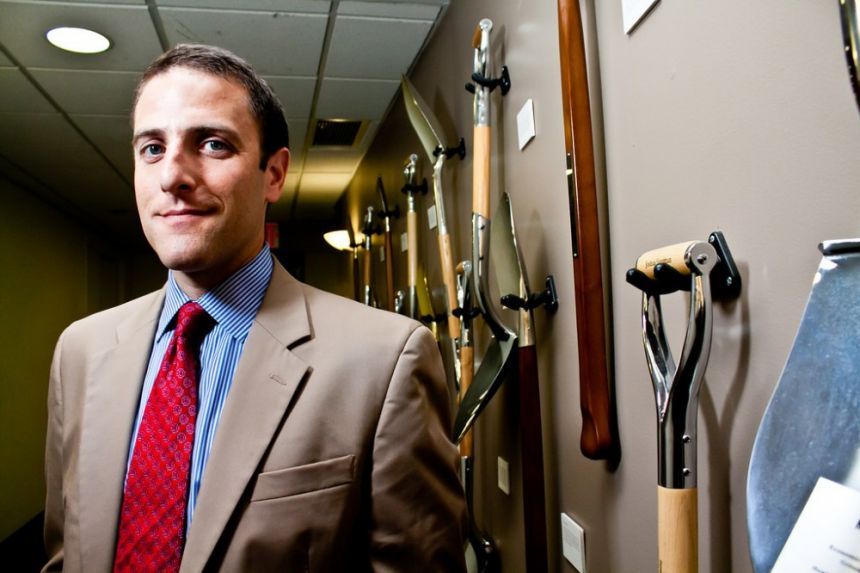Tuesday’s announcement that New York City Economic Development Corporation president Seth Pinsky is leaving the quasi-governmental authority for the private sector sent some ripples through the local real estate and development world.
The New York Observer called it the “twilight of an era,” noting how Pinsky “was, in many senses, Mayor [Michael] Bloomberg’s right-hand man” in securing major real estate deals for the city. Crain’s, which put Pinsky on its 2010 “40 Under 40” list, has a pretty glowing retrospective of his time at NYC EDC. The folks at Streetsblog, meanwhile, basically did a dance of glee.
However one feels about Pinsky and his legacy, there’s no denying that the mission and scope of NYC EDC expanded dramatically under his leadership. No other city in the U.S. has en economic development agency that’s quite as powerful as New York’s has been over the last five years, while Pinsky was in charge. To illustrate this point, we made a timeline of NYC EDC’s major accomplishments before and after Pinsky took over. (It’s an admittedly incomplete list — let us know if you have any additions in the comments.)
1991
- Two city entities, the Public Development Corporation (PDC) and the Financial Services Corporation (FSC), combine to form the New York City Economic Development Corporation. Prior to merging the two groups had worked together, with the PDC overseeing the sale and lease of city-owned property and the FSC helping firms find money for city-backed projects.
1997
- NYC EDC begins investing in the 100-acre East New York Industrial Business Zone, bringing money and 625 jobs to one of Brooklyn’s most disinvested neighborhoods.
2005
- NYC EDC develops the Hunts Point Vision Plan, which lays out short-term goals for redeveloping the 690-acre Hunts Point Peninsula in the Bronx.
2006
- The South Bronx Greenway, a component of the Hunts Point Vision Plan, is conceived as an ongoing process to 1.5 miles of waterfront green space to the city’s poorest borough, along with greening projects along 8.5 miles of Bronx Streets. The Greenway helps put Bronx activist Majora Carter and her group, Sustainable South Bronx, on the map.
2008
- Mayor Bloomberg appoints Seth Pinsky, a former investment analyst and lawyer, as president of NYC EDC.
2009
- Citi Field, which replaced Shea Stadium as the home of the New York Mets, opens in Queens. The adjacent neighborhood of Willets Point, hitherto known mainly for its abundance of auto repair shops and lack of sidewalks, becomes the target for a major redevelopment. The result is NYC EDC’s Willets Point Development Plan, an effort to rebuild 62 acres in the neighborhood with a hotel, retail and 2,500 housing units. The development is among the more controversial in the city due to concerns about eminent domain and displacement of the many working-class businesses in the area.
- A four-years-in-the-making effort to redevelop Coney Island gets underway when NYC EDC releases an RFP for 6.5 acres of property in the amusement park, land that the city had finally acquired for $95 million in a deal arranged by NYC EDC. The first stage of the project, Luna Park, opens the following year. The second stage, a section of the park called Scream Zone, opens in 2011. Now that a revamped amusement park is up and running, the city has eyed the neighborhood at large for future projects.
2011
- With funds from NYC EDC, the Museum of the Moving Image reopens in Astoria, Queens. It doubles in size and anticipates the exodus of cool kids from brownstone Brooklyn to western Queens. The museum receives annual support from NYC EDC.
- The city, Cornell Univesity and Technion-Israel Institute of Technology (based in Haifa, Israel) partner to begin work on Cornell-Technion, an ambitious plan to turn Roosevelt Island into a major tech campus. Last fall Nancy Scola had a long Forefront story detailing the plans and NYC EDC’s role. Next City also held a panel discussion in September at which Pinksy further elaborated on the vision for Roosevelt Island as the center of New York’s growing technology sector. See a video from that event below.
2012
- Bloomberg creates the Special Initiative for Rebuilding and Resiliency, a $20 billion response to Hurricane Sandy to not only rebuild damaged neighborhoods but also better prepare the city for future storms, with Pinsky at the helm.
2013
- Bloomberg and NYC EDC announce plans to turn the Kingsbridge Armory, a 750,000-square-foot Bronx building that has stood vacant since 1996, into a massive ice hockey and skating complex.
- Pinsky leaves the NYC EDC for the financial sector. His successor is Kyle Kimball, the agency’s executive director.
















